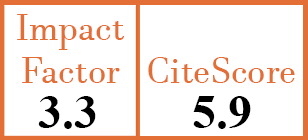Full Papers
Clinical characteristics and prognostic analysis of concurrent Pneumocystis jirovecii pneumonia in patients with connective tissue diseases: a retrospective study
Y. Shi1, R. Chen2, H. Sun3, K. Xu4, Z. Li5, M. Wang6, C. Shao7, H. Huang8
- Department of Pulmonary and Critical Care Medicine, Peking Union Medical College Hospital, Chinese Academy of Medical Sciences & Peking Union Medical College, Beijing, China.
- Department of Pulmonary and Critical Care Medicine, Peking Union Medical College Hospital, Chinese Academy of Medical Sciences & Peking Union Medical College, Beijing, China.
- Department of Clinical Laboratory, Peking Union Medical College Hospital, Chinese Academy of Medical Sciences & Peking Union Medical College, Beijing, China.
- Department of Radiology, Peking Union Medical College Hospital, Chinese Academy of Medical Sciences & Peking Union Medical College, Beijing, China.
- Department of Pulmonary and Critical Care Medicine, Peking Union Medical College Hospital, Chinese Academy of Medical Sciences & Peking Union Medical College, Beijing, China.
- Department of Pulmonary and Critical Care Medicine, Peking Union Medical College Hospital, Chinese Academy of Medical Sciences & Peking Union Medical College, Beijing, China.
- Department of Pulmonary and Critical Care Medicine, Peking Union Medical College Hospital, Chinese Academy of Medical Sciences & Peking Union Medical College, Beijing, China.
- Department of Pulmonary and Critical Care Medicine, Peking Union Medical College Hospital, Chinese Academy of Medical Sciences & Peking Union Medical College, Beijing, China. pumchhh@126.com
CER18985
Full Papers
PMID: 41042710 [PubMed]
Received: 06/06/2025
Accepted : 01/09/2025
In Press: 02/10/2025
Abstract
OBJECTIVES:
The incidence of Pneumocystis jirovecii pneumonia (PJP) in connective tissue diseases (CTD) patients is increasing and the mortality rate is high. We carried out this study to describe clinical characteristics in PJP patients with different underlying CTDs and identify prognostic risk factors in CTD-PJP patients.
METHODS:
We retrospectively enrolled consecutive patients with CTD-PJP in our centre between January 2014 and December 2022. We included 248 participants who were classified according to underlying CTD or clinical outcomes.
RESULTS:
In our study, there were 57 CTD-PJP patients (41, 66) years, 64.5% of whom were female, 108 (43.5%) of whom died. There were more interstitial lung disease (ILD) (p<0.001), pneumomediastinum (p=0.004), and a higher corticosteroid dosage (p=0.003) in the idiopathic inflammatory myopathy (IIM) group of patients. Patients in the IIM group had a significant highest mortality (65.5%), whereas those in the rheumatoid arthritis (RA) group had a lower mortality rate (30.4%) (p=0.006). Multivariate analysis indicated that IIM (HR=6.657, p<0.001, 95% CI: 2.883–15.368), hospital-acquired pneumonia (HAP) (HR=2.175, p<0.05, 95% CI: 1.028–4.601), lower minimal albumin (Alb) (HR=0.869, p<0.001, 95% CI: 0.802–0.942) and higher lactate dehydrogenase (LDH) (HR=1.002, p<0.001, 95% CI: 1.001–1.003) were independent risk factors for the survival of CTD-PJP patients. The optimal cut-off point of serum minimal Alb was 26.5 g/L and serum LDH was 612 U/L, respectively.
CONCLUSIONS:
CTD-PJP patients were mainly middle-aged female, with a high mortality rate. IIM patients had a relatively worse outcome, while RA patients had a relatively better survival rate. IIM, HAP, lower serum minimal Alb and higher LDH were independent survival risk factors for them.



